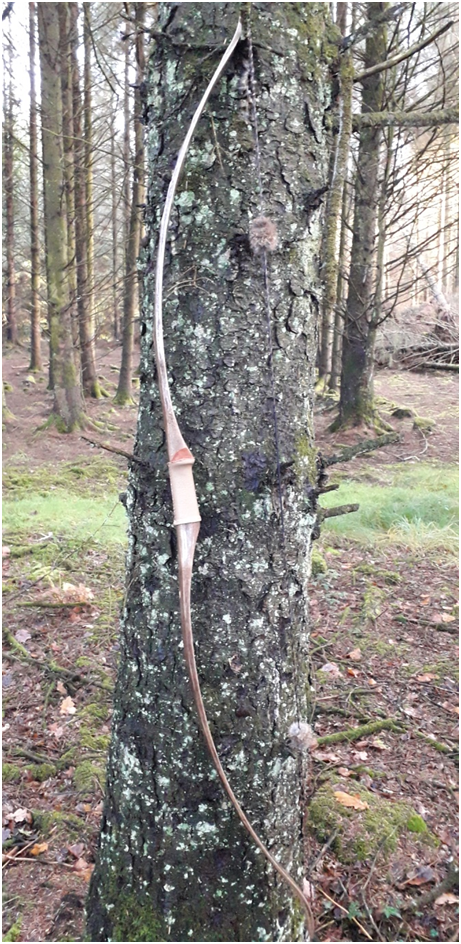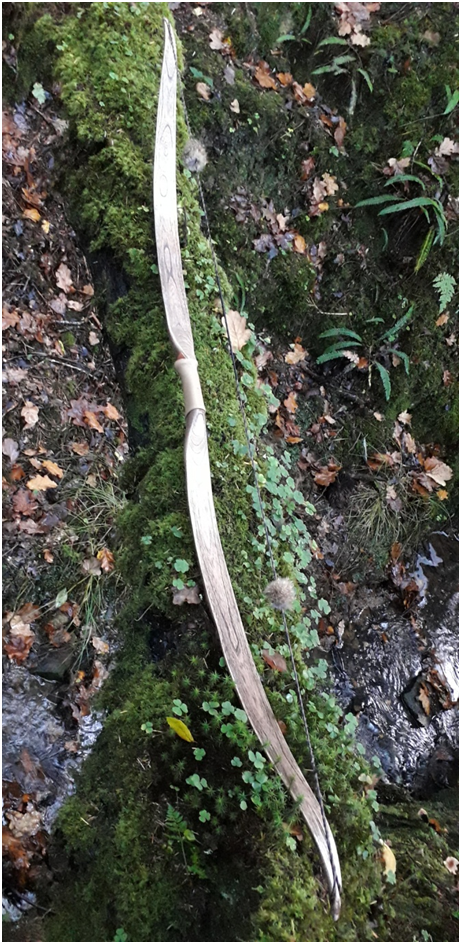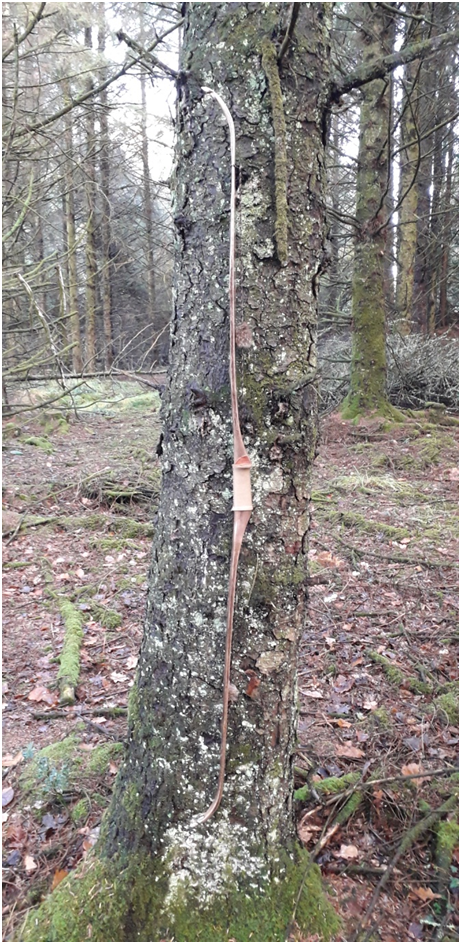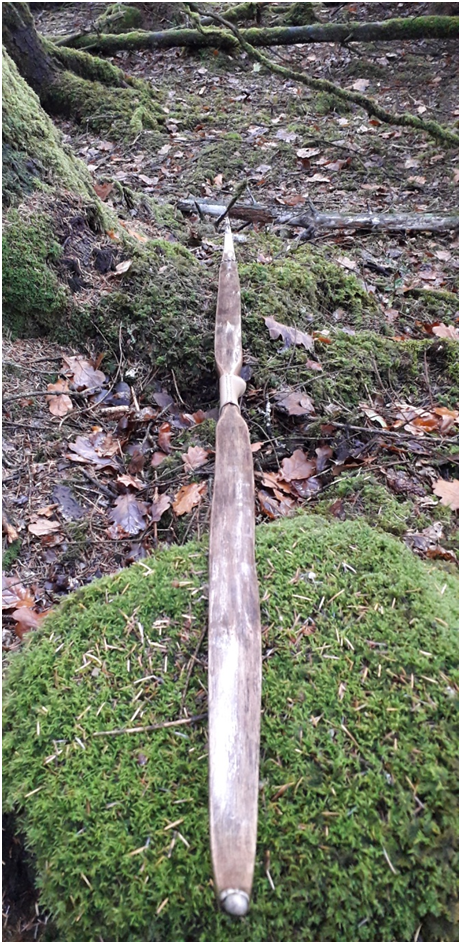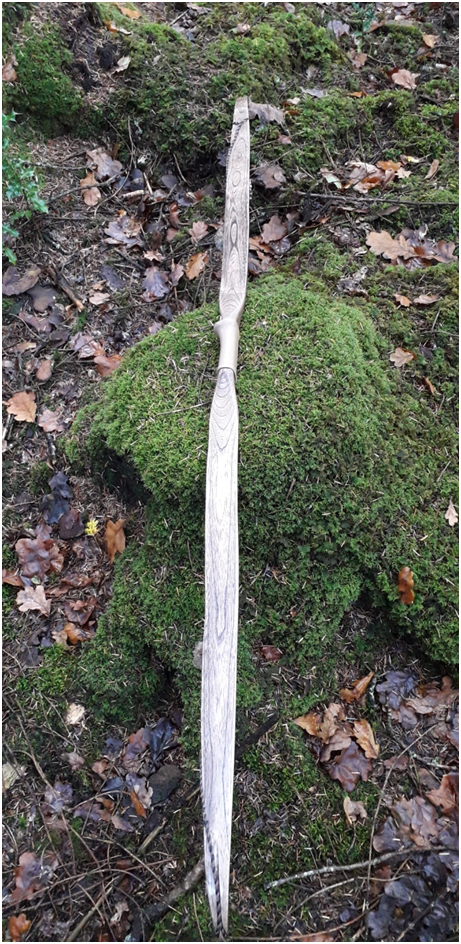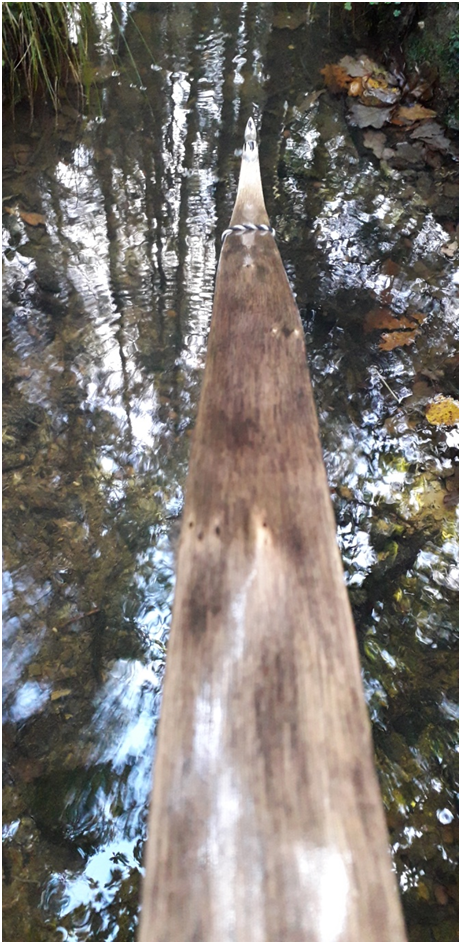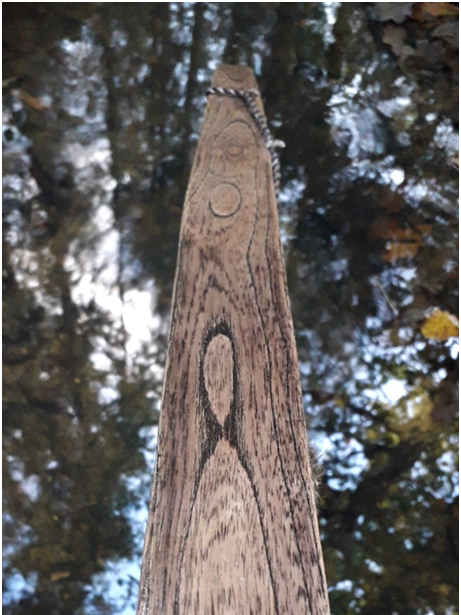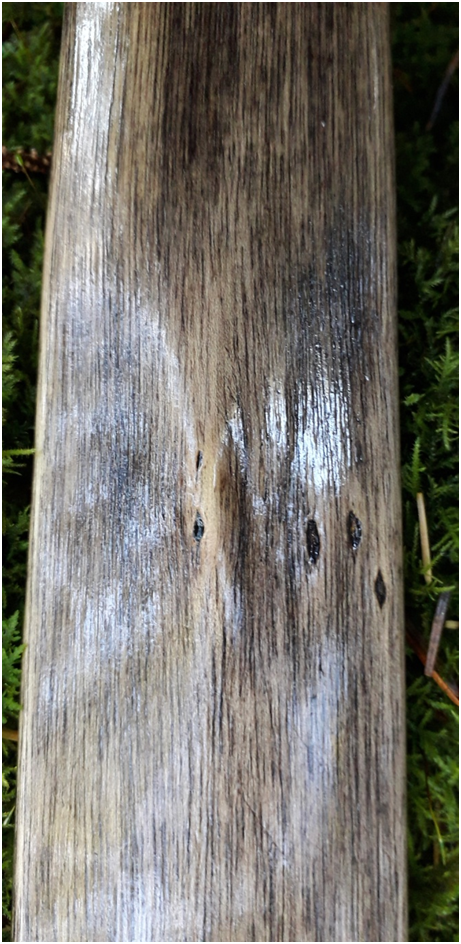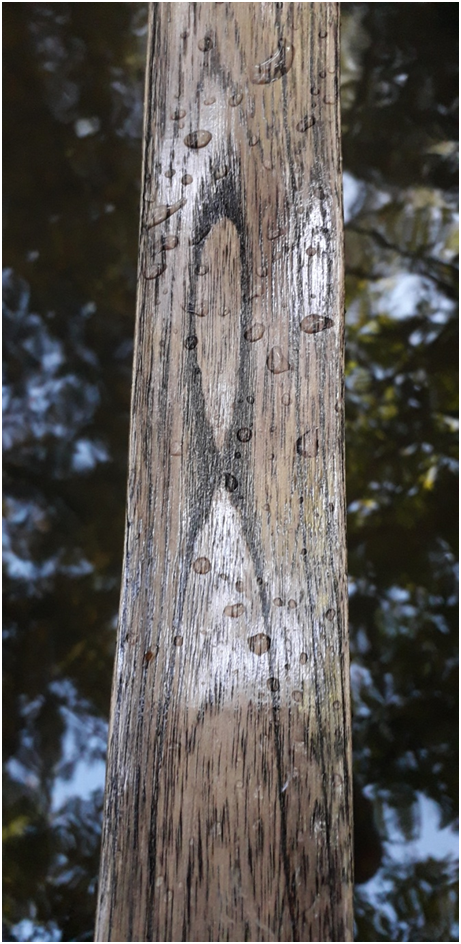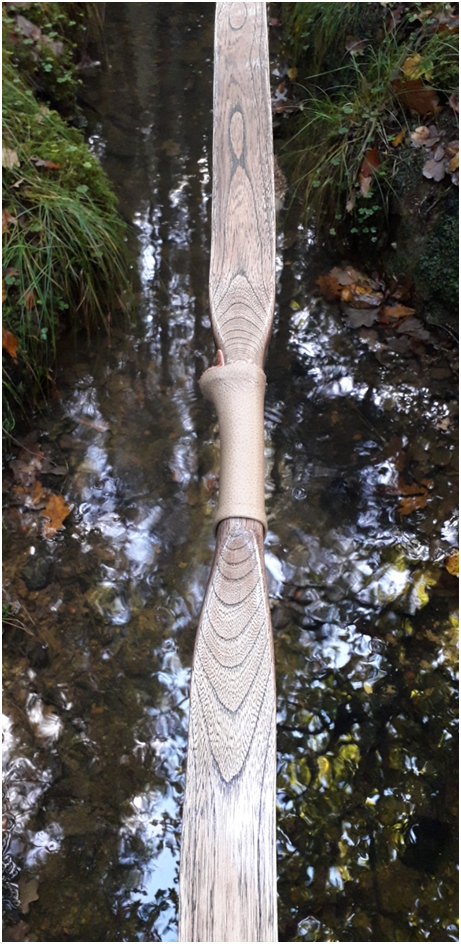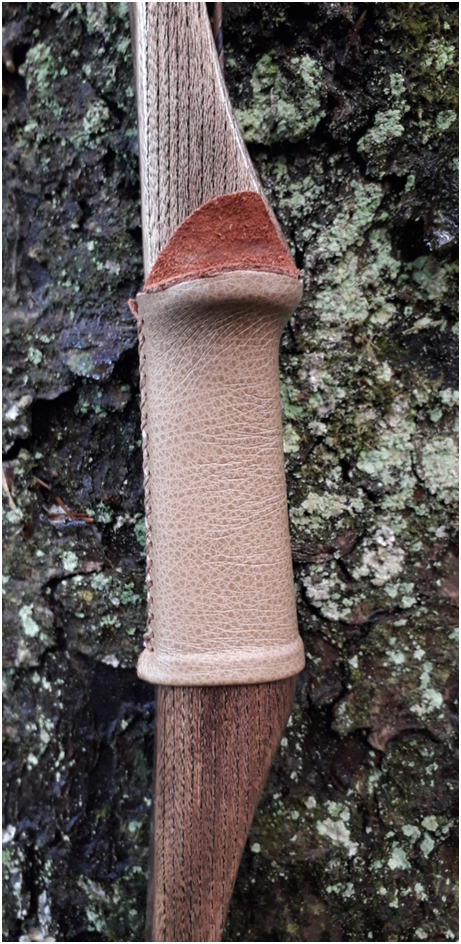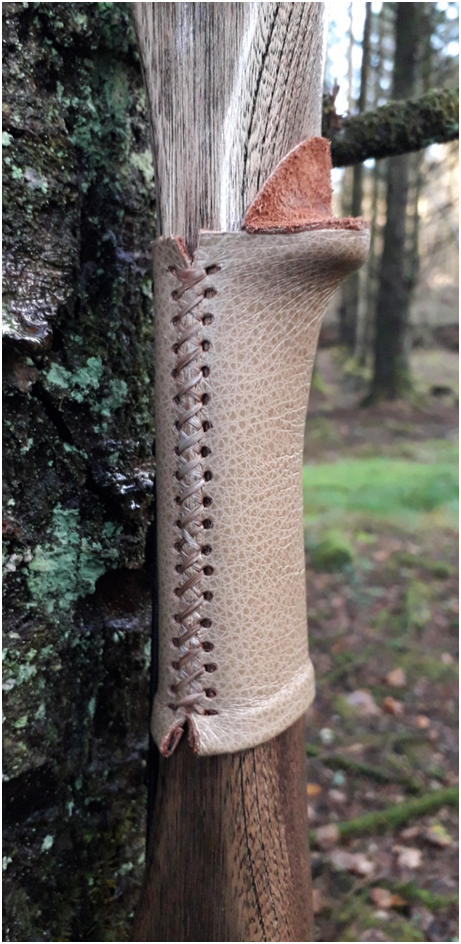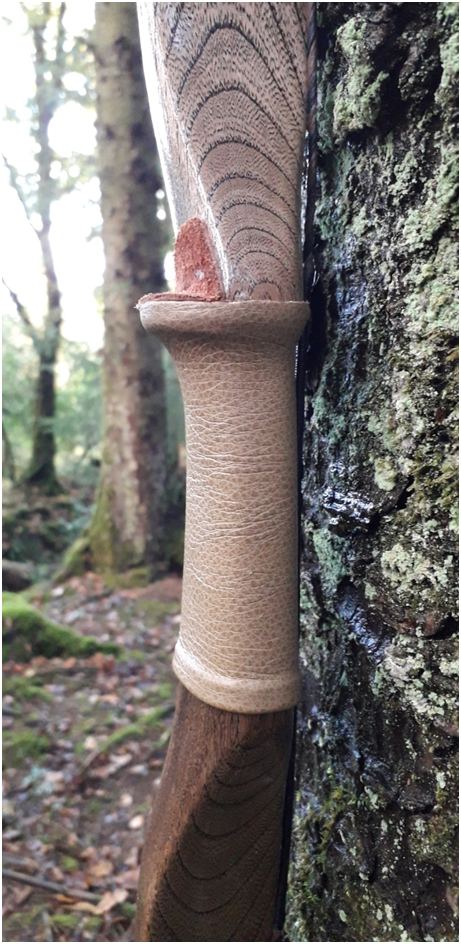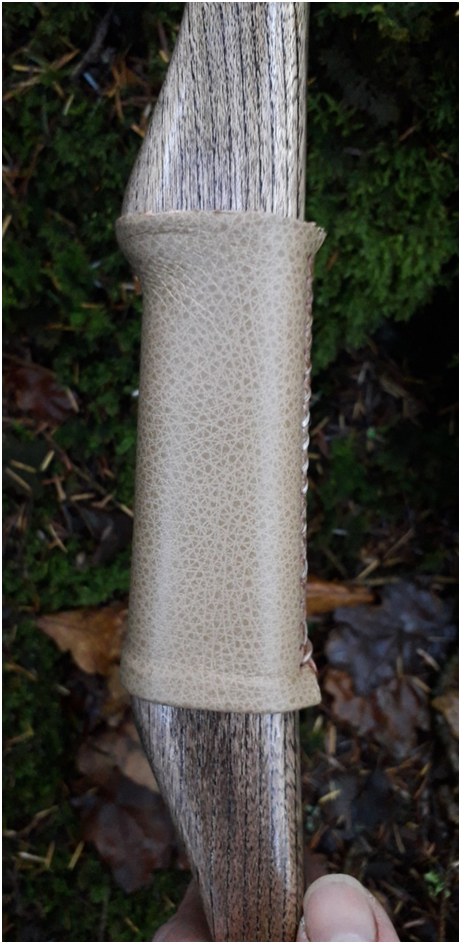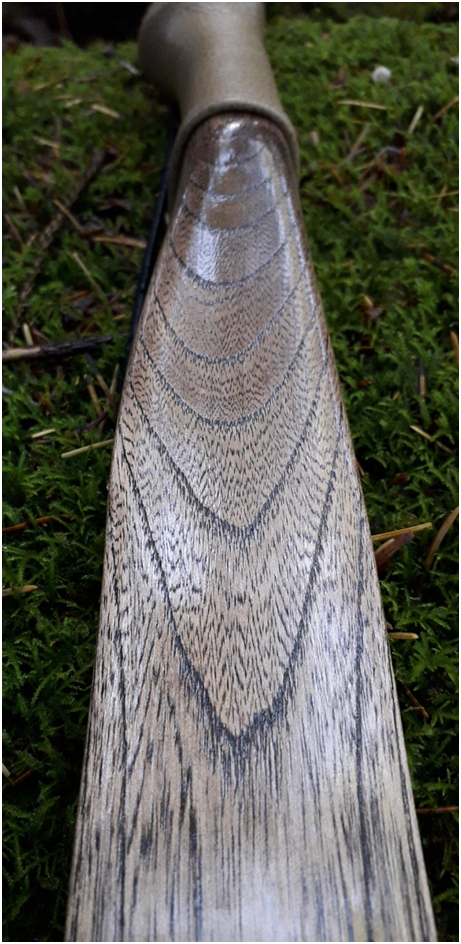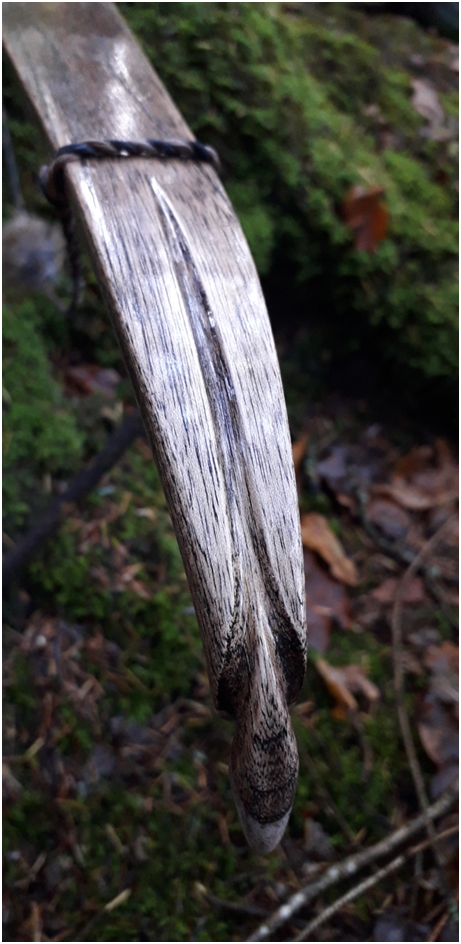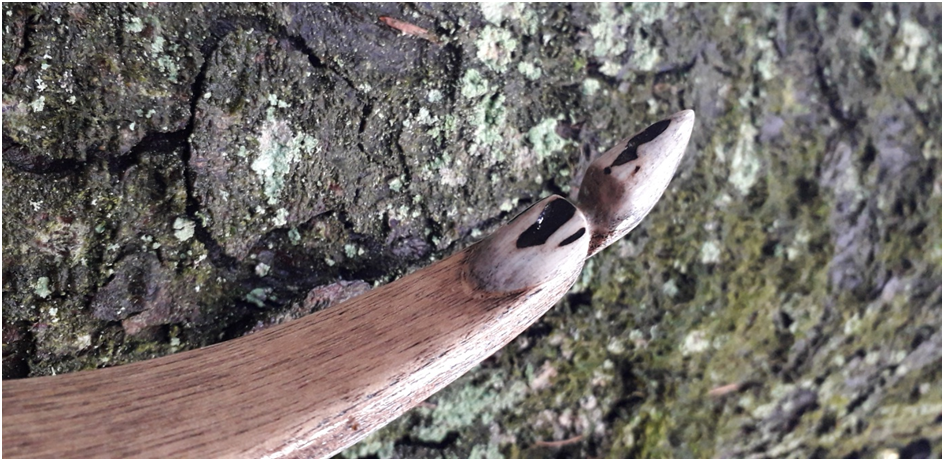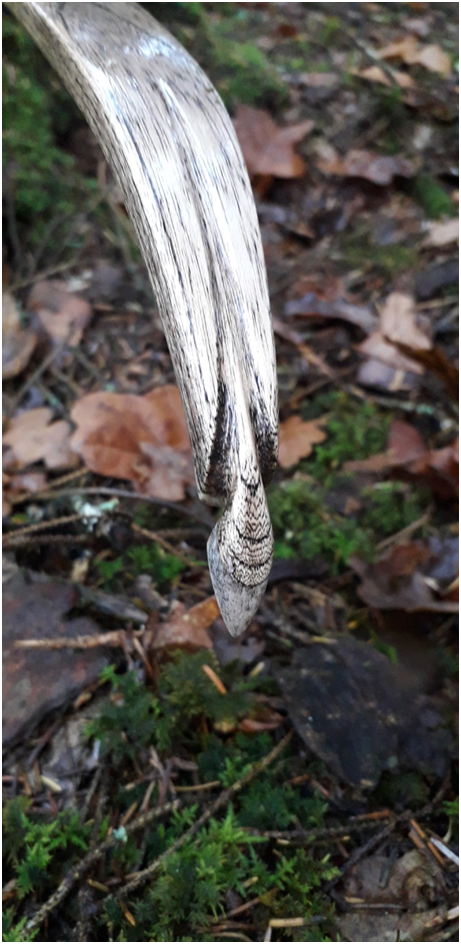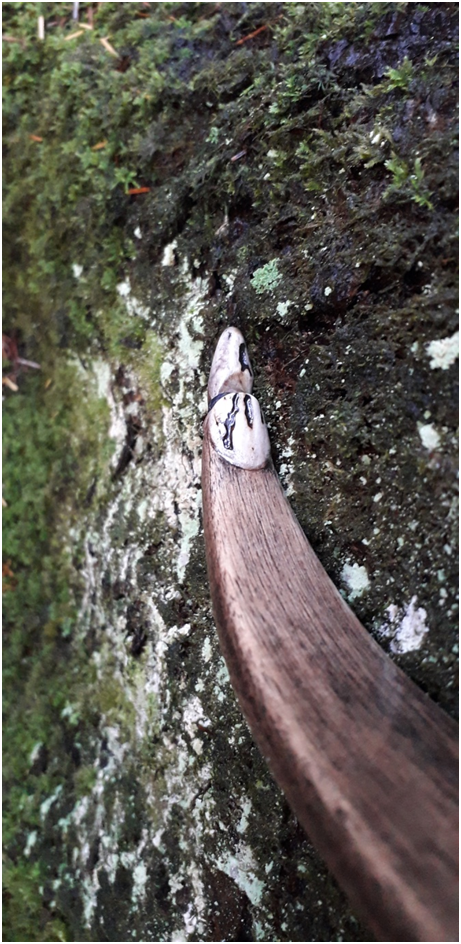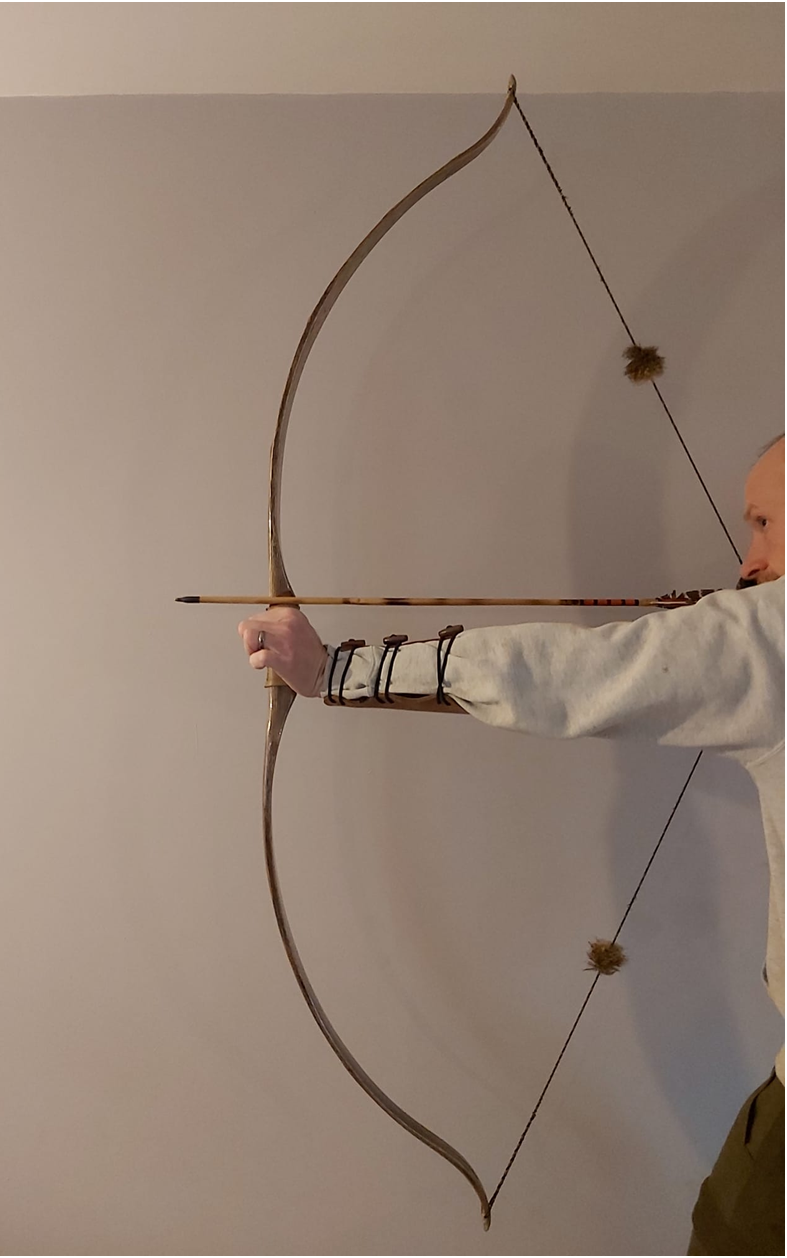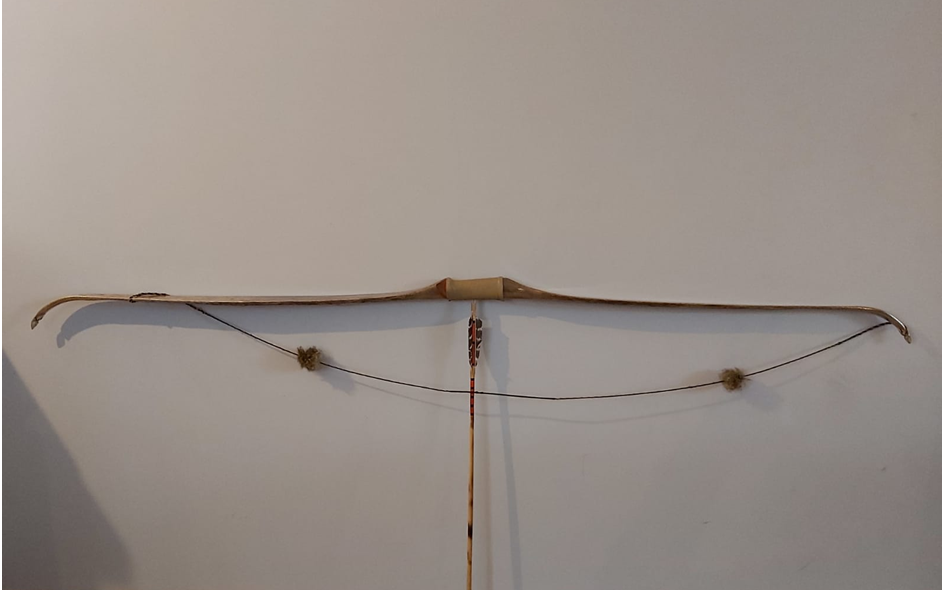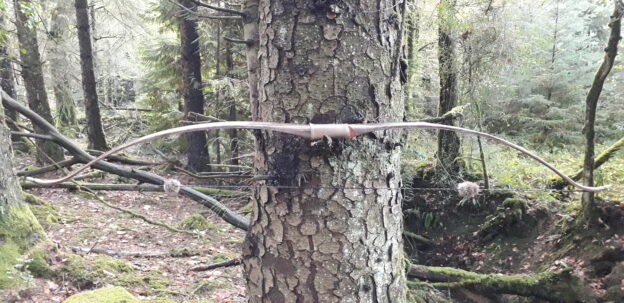I built this bow from a totally green 4” diameter English Elm log which came my way back in the spring of 2022. The bark slipped off perfectly which was good in that it was easy to remove, but meant that the bow finished out lacking the wonderful cambium camo effect which I absolutely love to see on white wood selfbows.
As with most Elm logs above 3” in diameter, this log had some beetle damage which resulted in this log only producing one stave in the end. This was a shame as the log was clean, straight and carrying little twist. If it wasn’t for the beetle damage then I’d have got two nice staves from this log.
The damage free stave was slightly reflexed in the handle area but had a nice straight face profile with tips almost in alignment with the handle centre. After recurving I chose the top limb so that the string would favour the left side of the riser section since I’m a righty. I laid out the staves with symmetrical limbs and a handle section which would accommodate a 4” grip with 3” fades.
Both limb sections had a tiny amount of deflex mid limb so I could see the potential for a deflex reflex riser/limb profile. Since the stave was 66”, long I laid out the bow to finish 64” nock to nock. This is ample length to safely accommodate light recurves on a nice and wide limbed Elm flatbow.
I planned to finish with a solid and safe selfbow around 50lb at 26”. Flicking the tips on a bow this length shouldn’t stress the limbs, but as a back up against chrysling the belly, I kept the limbs around 1” 7/8ths wide for the first 2 thirds tapering rapidly down to ½” wide static flicked tips in the final thirds of the limb.
This staves back had some crowning to it but not really enough to warrant hollowing out the belly although in hind sight I probably should have. That said the flat belly/low crown cross section profile appears to have retained adequate compression strength and has withstood any fretting, even after much shooting with a held anchor. The deflex/reflex profile probably helped here too and certainly made the tillering process easy. The draw of this bow is also very smooth with very little stack.
This stave was simple and quick to tiller given the very even natural profile and in no time I was left with a snappy, low volume, low mass flatbow (570 grams) which is very pointable and is an absolute pleasure to shoot. Brace height is 5 1/2” and the tiller is 1/8” positive. This is one of those bows which when braced plays a note with one of those wonderful high frequency resonances when the string is plucked. Dinnnnnnnnnng!
I could have produced a heavier draw weight from this stave but I like bows around the 50lb mark at my draw length of 26” so I aimed for that and got it. There is no hand shock since the tips are low in mass and the grip is very comfortable to hold with a loose grip. The bow shoots hard at 26” and shooting a 9gn/lb arrow (450gn) over the chronograph produced average speeds around 156ft/sec.
The stave was fairly plain with no wiggle to speak of. Nor were there many significant quirks like knots etc so I decided to stain the bow so as to draw out the main feature which was the beautiful grain on the belly. A contoured grip and arrow shelf made a bit more of a feature out of the handle section and antler tip overlays helped to pimp up the limb tips a bit.
The arrow rest is not cut to centre but the paradox isn’t a problem anyway. An arrow in the 45-50lb spine range shoots well in this bow.
The handle received a light tan leather covering which was also used in reverse to serve the arrow pass. The stain is an oil based Dark Oak colour finished with many coats of truoil.
Here are the Pics. Enjoy!:
